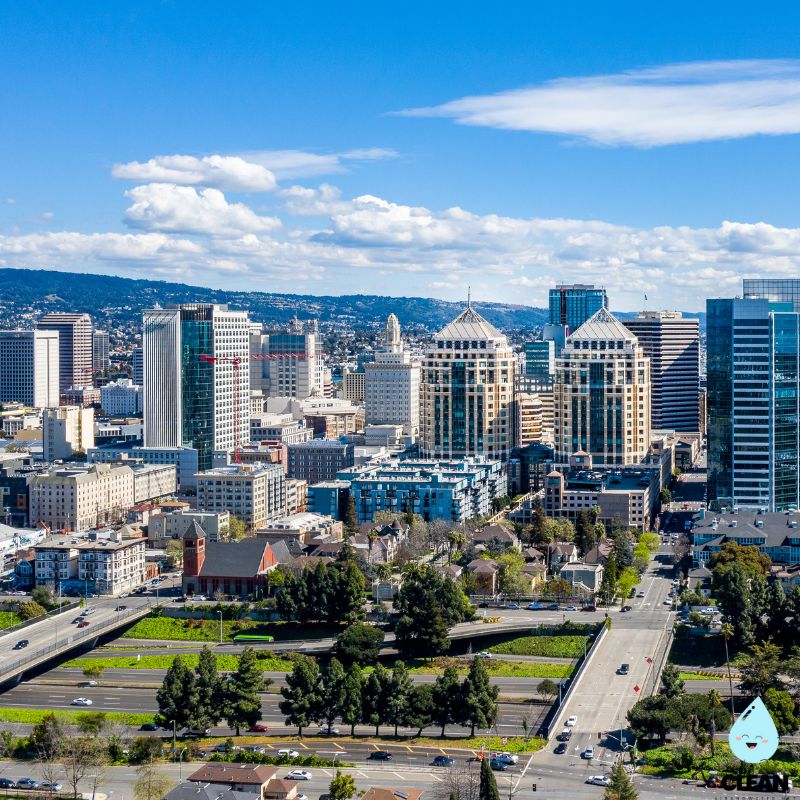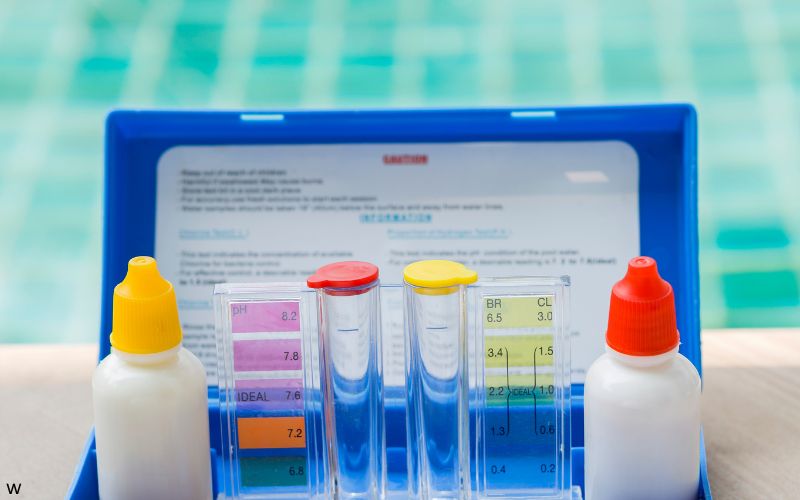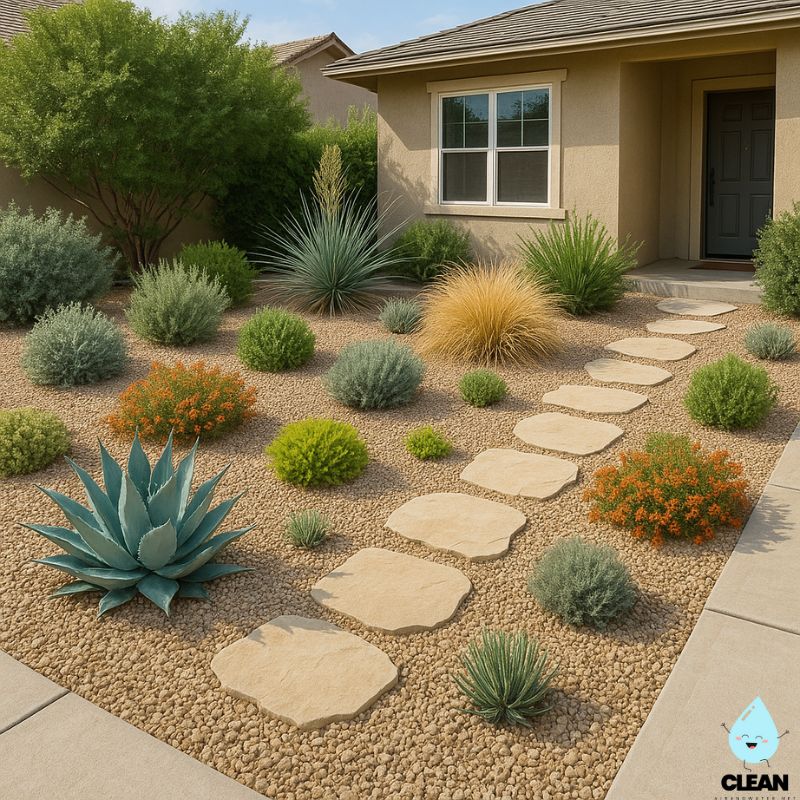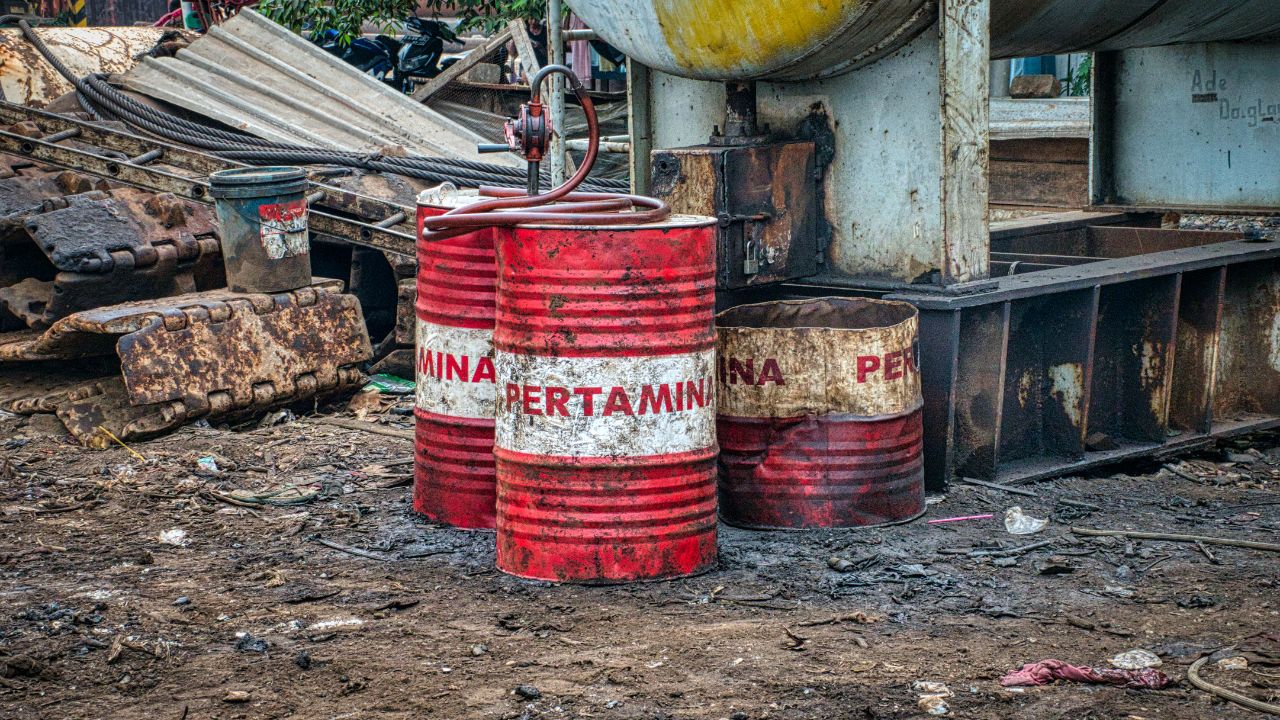Oakland Water Quality at a Glance
5 contaminants exceed health guidelines
Is Oakland Water Safe to Drink?
Generally Safe with Monitoring Recommended – Oakland water meets federal standards and is considered among the better systems in California. However, 5 contaminants exceed EWG health guidelines, including chromium-6 at 0.05 ppb (2.5x health guideline), haloacetic acids from chlorination, and low-level PFAS detection. The water comes from Sierra Nevada snowmelt via EBMUD’s protected watershed, providing a relatively clean source compared to many urban areas.
⚠️ Key Monitoring Points for Oakland Residents
- Chromium-6 (Hexavalent Chromium): Detected at 0.05 ppb, which is 2.5x the health guideline of 0.02 ppb; carcinogenic heavy metal
- Disinfection Byproducts: Haloacetic acids (HAA5 and HAA9) and total trihalomethanes from chlorination process exceed health guidelines
- PFAS “Forever Chemicals”: Low-level detections including PFOA and PFOS, with some results up to 4.9 ppt near new EPA standards
- Sierra Source Protection: EBMUD’s protected watershed in Sierra foothills provides relatively clean source water compared to groundwater systems
Read the full report below for detailed analysis, city-specific data, and actionable recommendations for Oakland residents.
Oakland – California – Water Quality Report 2025: PFAS Testing, Infrastructure Concerns & Safety across your city
The East Bay Municipal Utility District (EBMUD) provides water services to approximately 1.4 million residents across the East Bay area, including Oakland and neighboring communities in Alameda and Contra Costa counties. Established in 1923, the utility system manages an extensive network of over 4,200 miles of pipelines, numerous reservoirs, pumping stations, and advanced treatment facilities that deliver an average of 170 million gallons of drinking water daily to the region.
Oakland’s primary water source comes from the Mokelumne River watershed in the Sierra Nevada mountains, approximately 90 miles east of the service area. The water travels through aqueducts to local reservoirs before being treated at one of EBMUD’s six water treatment plants. The Orinda Water Treatment Plant serves as the primary facility with a capacity of 200 million gallons per day, while the Upper San Leandro Plant in Oakland provides additional treatment capacity. EBMUD’s water consistently meets all federal and state quality standards, though Environmental Working Group analysis shows 5 contaminants exceed health guidelines including chromium-6, disinfection byproducts, and low-level PFAS detection. The utility conducts more than 20,000 water quality tests annually and has implemented significant investments in water treatment technology, conservation initiatives, and watershed protection to ensure a sustainable water supply for future generations.

Oakland Water Quality: Current Status (2024-2025)
Latest Testing Results
- Comprehensive Testing: EBMUD performs over 20,000 laboratory tests annually to ensure drinking water safety, monitoring for more than 100 substances including microorganisms, pesticides, herbicides, asbestos, lead, copper, and industrial by-products.
- Compliance Status: In 2024, Oakland’s drinking water met or surpassed all federal and state drinking water quality standards according to EBMUD’s annual water quality report, maintaining full compliance with EPA and California Department of Environmental Quality regulations.
- EWG Health Guidelines: While meeting regulatory standards, independent analysis shows 5 contaminants exceed Environmental Working Group health guidelines: bromate, chromium-6 (at 0.05 ppb vs 0.02 ppb guideline), haloacetic acids (HAA5 and HAA9), and total trihalomethanes from disinfection processes.
- Lead and Copper Monitoring: Oakland remains in compliance with EPA regulations for lead and copper in drinking water. EBMUD offers free lead testing to concerned customers and utilizes corrosion control measures to prevent leaching from plumbing systems.
Water Sources
- Mokelumne River Watershed: Primary source (approximately 90% of supply) located in the Sierra Nevada mountains, with snowmelt providing high-quality water that travels through aqueducts to the East Bay.
- Local Reservoirs: Secondary sources include local East Bay reservoirs such as San Pablo and Upper San Leandro, which serve as important backup supplies during maintenance periods or drought conditions.
- Watershed Protection: EBMUD maintains comprehensive watershed management programs including land conservation initiatives and pollution prevention measures to protect both Sierra and local water sources from contamination.
Advanced Treatment Technology
- Orinda Water Treatment Plant: The primary treatment facility utilizes multi-barrier approaches including coagulation, flocculation, sedimentation, filtration, and disinfection, with a capacity of 200 million gallons per day serving over 800,000 customers daily.
- Upper San Leandro Plant: Located in Oakland, this facility incorporates advanced technologies including ozone treatment for disinfection and control of taste and odor-causing compounds common in local reservoir water.
- Disinfection Management: EBMUD adds fluoride at 0.7 ppm to promote dental health and uses calcium hydroxide (lime) and sodium hydroxide to achieve a slightly alkaline balance and prevent pipe corrosion.
Infrastructure Modernization
- Pipeline Upgrades: Ongoing replacement and rehabilitation of aging water mains throughout Oakland and the East Bay, with focused efforts on neighborhoods with infrastructure dating back to the early 20th century.
- Seismic Improvements: Implementation of seismic upgrades to critical facilities, including reservoirs and treatment plants, to enhance system resilience in this earthquake-prone region.
- Smart Water Management: Deployment of advanced monitoring systems throughout the distribution network to detect leaks, improve water quality management, and enhance overall system reliability.
Customer Protection Initiatives
EBMUD provides extensive customer support through various programs, including free lead testing kits for concerned residents and the Customer Assistance Program (CAP) offering discounts for qualifying low-income customers. Educational outreach helps residents understand water quality, conservation practices, and the value of water resources in the Bay Area. EBMUD’s commitment to water quality includes transparent communication through annual and monthly water quality reports, available to all customers. The utility’s continued investments in advanced treatment technologies and source water protection demonstrate its dedication to providing safe, reliable drinking water while preparing for future challenges including population growth, climate variability, and emerging contaminants like PFAS which have been detected at low levels in recent monitoring.
Recommendations for Oakland Residents

Request Free Water Testing
EBMUD offers free lead testing to all customers who have concerns about their water quality. This is especially recommended for homes built before 1986 that may have older plumbing systems. Call 1-866-403-2683 or visit ebmud.com for details.

Explore WaterSmart Program
Take advantage of EBMUD’s WaterSmart program, which provides free water conservation kits, rebates for efficient fixtures and appliances, and guidance on water-wise landscaping to reduce water waste and lower your bills.

Consider Home Filtration
While Oakland’s water meets all regulatory standards, homes may benefit from NSF-certified filters (Standard 53) for drinking and cooking water, especially for reducing disinfection byproducts like trihalomethanes and haloacetic acids that exceed health guidelines, and addressing taste preferences.

Install Rainwater Harvesting
Consider installing rain barrels or cisterns to collect rainwater for garden irrigation. This sustainable practice reduces demand on treated water supplies and helps prevent runoff pollution. Check with EBMUD for possible rebate opportunities.

Report Water Issues
Contact EBMUD Customer Service at 1-866-403-2683 (available 24/7) for water main breaks, pressure problems, or quality concerns. Report water waste through EBMUD’s online form to help conserve water and maintain system integrity.
Frequently Asked Questions
Is Oakland’s tap water safe to drink?
Yes, Oakland’s tap water meets all federal and state drinking water standards and is generally considered safe. The city’s water comes primarily from the Mokelumne River watershed in the Sierra Nevada mountains, which provides high-quality source water that undergoes comprehensive treatment including filtration and disinfection.
However, independent analysis shows 5 contaminants exceed Environmental Working Group health guidelines, including chromium-6 and disinfection byproducts. EBMUD conducts over 20,000 tests annually to ensure water quality, with treatment processes at all plants incorporating multiple barriers against contaminants. The utility’s commitment to water quality is demonstrated by its continuous monitoring and transparent reporting through annual water quality reports available to all customers.
Why does my water sometimes taste or smell different?
Occasional taste and odor changes can occur due to several factors:
1. Operational adjustments: Throughout the year, EBMUD may shift water sources from the Mokelumne River to local reservoirs or change treatment plants to manage supplies or accommodate maintenance projects
2. Seasonal water quality changes: Local reservoirs can develop algae blooms during warmer weather that, while filtered out during treatment, may leave behind compounds causing earthy or musty tastes
3. Home plumbing: Internal plumbing issues or infrequently used faucets can sometimes cause taste or odor concerns
If taste or odor issues persist, contact EBMUD at 1-866-403-2683 for assistance. Often, running cold water for a few minutes after periods of non-use can help improve water quality from your tap.
Does Oakland have lead in its water system?
EBMUD complies with all federal and state regulations for lead and copper in drinking water:
• Lead service lines: EBMUD has no known lead service lines in its service area, though homes built before 1986 may have lead solder or components in internal plumbing
• Corrosion control: The utility uses corrosion inhibitors and pH optimization to prevent leaching of lead and copper from plumbing systems
• Testing results: Lead and copper sampling consistently shows levels well below federal action limits
• Free testing: Residents can request free lead testing through EBMUD’s customer service
While Oakland’s overall water system is lead-free, older homes may have internal plumbing containing lead components, which is why EBMUD offers free testing for concerned residents.
Are there water restrictions in Oakland?
EBMUD implements conservation measures based on water supply conditions, which can range from voluntary conservation to mandatory restrictions:
Current Conservation Guidelines:
• EBMUD encourages efficient water use year-round through its WaterSmart program
• Report water waste through EBMUD’s online form or by calling customer service
• Avoid runoff onto streets and sidewalks during irrigation
During Drought Conditions:
During severe drought, EBMUD may implement additional restrictions including:
• Limits on outdoor watering frequency and duration
• Surcharges for excessive water use
Current water restriction status is available at ebmud.com or by calling 1-866-403-2683.
Quality News About Your Water
Get the comprehensive water quality news coverage you need with our dedicated US Water News Service. From coast to coast, we deliver in-depth reporting and expert analysis on PFAS contamination, EPA regulatory changes, infrastructure developments, and emerging water safety issues affecting communities nationwide. While mainstream media only covers the biggest stories, we provide the detailed, ongoing coverage that helps you understand the full scope of America’s water challenges. Whether you’re a concerned citizen, water professional, or community leader, our daily updates and analytical insights keep you informed about the issues that matter most to public health and environmental safety.
Contaminants of Concern

Disinfection Byproducts
Source: Formed when disinfectants such as chlorine react with naturally occurring organic matter in source water; more prevalent when water from local reservoirs is used
Health Effects: Long-term exposure to elevated levels may increase risk of certain cancers and potentially affect liver, kidney, and central nervous system
Current Levels: Haloacetic acids (HAA5 and HAA9) and total trihalomethanes exceed Environmental Working Group health guidelines but remain below EPA maximum contaminant levels EPA Limits: 80 ppb for total trihalomethanes (TTHMs) and 60 ppb for haloacetic acids (HAA5)

PFAS Compounds & Chromium-6
PFAS Source: Per- and polyfluoroalkyl substances found in industrial processes, firefighting foams, and consumer products that can enter source waters
Chromium-6 Source: Hexavalent chromium from natural mineral deposits and industrial pollution; detected at 0.05 ppb (2.5x the health guideline of 0.02 ppb)
Health Effects: PFAS research suggests potential impacts on immune system, thyroid function, and possible cancer links. Chromium-6 is a known carcinogen that can cause cancer based on laboratory studies.
Current Status: EBMUD has detected some PFAS compounds including PFOA and PFOS at very low levels, with some results up to 4.9 ppt near EPA’s new 4 ppt standard. Oakland’s chromium-6 levels are among the lowest in the nation but still exceed health guidelines. EPA Limits: New enforceable standards of 4 parts per trillion for PFOA and PFOS; no federal limit for chromium-6 (California limit: 10 ppb).
Please read – our information
The information presented on cleanairandwater.net is compiled from official water quality reports, trusted news sources, government websites, and public health resources. While we strive for accuracy and thoroughness in our presentations, we are not scientists, engineers, or qualified water quality professionals.
Our mission is to present water quality information in an accessible, real-world format that helps people understand what’s in their water and make informed decisions about their health and safety. We believe that complex environmental information should be available to everyone in a format that’s easy to understand.
We make every effort to ensure our content is current and accurate, but we cannot guarantee that all information is complete or error-free. This website should not replace official communications from your local water utility or health department. We always recommend consulting official sources for the most up-to-date information regarding your specific water system.
Clean Air and Water is not liable for any unintentional errors, omissions, or outdated information. The content on this site is provided for informational purposes only and should not be considered professional advice.


